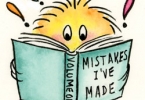IELTS Reading: Reading Comprehension
Reading Comprehension - Đọc hiểu văn bản được định nghĩa là mức độ hiểu biết về một văn bản bất kì : một đoạn văn, tin nhắn,... Bài Reading hôm nay là đọc hiểu về "Đọc hiểu" đấy  . Cùng đọc bài Reading này và xem từ vựng mới được liệt kê ở cuối bài để hiểu thêm nha.
. Cùng đọc bài Reading này và xem từ vựng mới được liệt kê ở cuối bài để hiểu thêm nha.
.jpg)
Reading Comprehension
Reading comprehension is defined as the level of understanding of a text/message. This understanding comes from the interaction between the words that are written and how they trigger knowledge outside the text/message.
Proficient reading depends on the ability to recognize words quickly and effortlessly. If word recognition is difficult, students use too much of their processing capacity to read individual words, whichinterfereswith their ability to comprehend what is read.
Many educators in the USA believe that students need to learn to analyze text (comprehend it) even before they can read it on their own, and comprehension instruction generally begins in pre-Kindergarten or Kindergarten. But other US educators consider this reading approach to be completely backward for very young children, arguing that the children must learn how to decode the words in a story through phonics before they can analyze the story itself.
During the last century comprehension lessons usually consisted of students answering teachers’ questions, writing responses to questions on their own, or both. The whole group version of this practice also often included “Round-robin reading”, wherein teachers called on individual students to read a portion of the text (and sometimes following a set order). In the last quarter of the 20th century, evidence accumulated that the read-test methods assessed comprehension more than they taught it.
The associated practice of “round robin” reading has also been questioned and eliminated by many educators. Instead of using the prior read-test method, research studies have concluded that there are much more effective ways to teach comprehension. Much work has been done in the area of teaching novice readers a bank of “reading strategies,” or tools to interpret and analyze text.
There is not a definitive set of strategies, but common ones include summarizing what you have read, monitoring your reading to make sure it is still making sense, and analyzing the structure of the text (e.g., the use of headings in science text). Some programs teach students how to self monitor whether they are understanding and provide students with tools for fixing comprehension problems.
Vocabulary
- interaction: tương tác
- trigger: gây ra, khởi sự
- proficient: thành thạo
- recognize: nhận ra
- interfere: can thiệp
- comprehend: hiểu
- instruction: hướng dẫn
- backward: đi sau, lạc hậu
- decode: giải mã
- phonic: ngữ âm
- consist: bao gồm
- wherein: trong đó
- accumulate: tích lũy
- Instead of: thay vì
- prior: trước
- interpret: giải thích
- definitive: dứt khoát
- summarize: tóm tắt











Bình luận